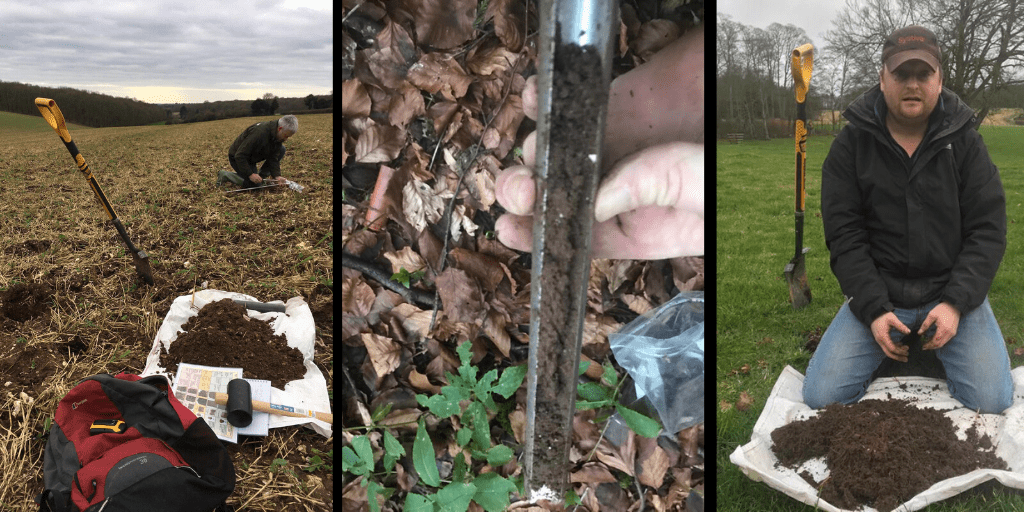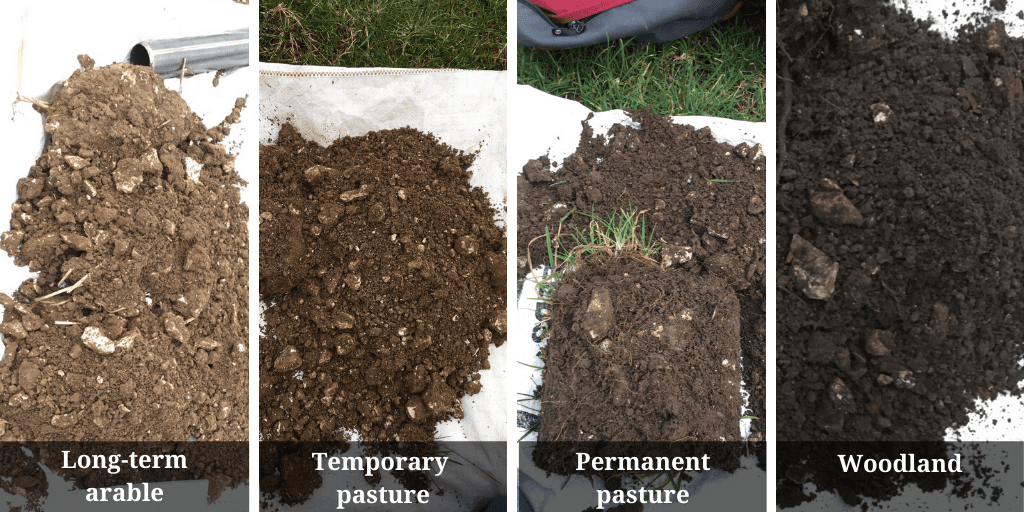Tom Tolputt and Anthony Ellis from South West Farm Consultants (SWFC) tell us about an exciting soil health project they are working on in the South Downs National Park. Working with a number of farms they are assessing soil health and soil carbon stocks and identifying ways to make the farms more resilient for the future.
In autumn 2019, Tom and Anthony were invited by the South Downs National Park Authority (SDNPA) to attend a meeting of the Winchester South Downs Farm Cluster group to give a presentation on soil health and regenerative practices, particularly their experiences from farming in Cornwall (and Australia!).
The talk was very well received and SWFC team was then invited to visit six monitor farms in the area to assess their soil health and soil carbon stocks. So, in February, Tom and Anthony spent two weeks assessing five fields on each of the monitor farms under a range of different management practices—including woodland, zero till, cover cropping, permanent and temporary pasture—to try to get a baseline of soil health versus land management.
Tests included worm counts, VESS (Visual Evaluation of Soil Structure), infiltration rate (with limited success given the weather!), slake tests, as well as in-depth lab analysis at two different depths to identify soil organic matter, soil organic carbon, macro and micronutrients and pH. Although these four soil samples (below) are all the same soil ‘type’, they reveal a significant colour change as a result of the increasing organic matter component in the soils due to the influence of land management, with long-term arable, temporary pasture, permanent pasture and woodland, respectively.
These four soil samples are all the same soil ‘type’, but reveal a significant colour change as a result of the increasing soil organic matter due to land management.
Working alongside Becky at Farm Carbon Toolkit, we will also provide the six farms with the carbon stocks on their individual farms and a clearer idea of their overall carbon footprint. At the end of the project, we hope to offer the SDNP farmers an in-depth look into how each farm sits in terms of its carbon footprint and general soil health, as well ideas about how they might improve and adapt their management practices to create a more resilient farming system for the future, as part of a wider strategy of taking the farms down a more regenerative approach.



